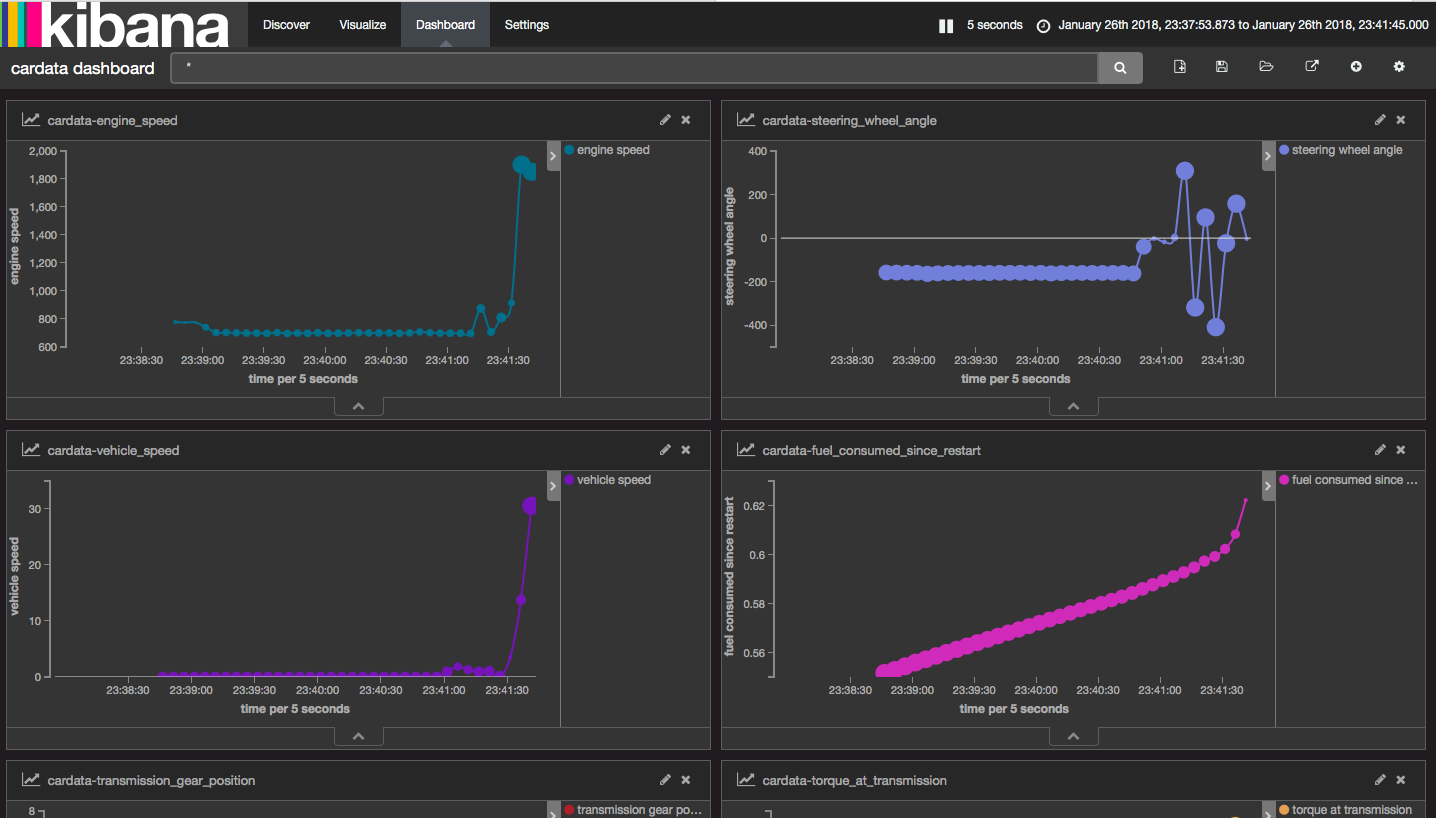datastream.io
An open-source framework for real-time anomaly detection using Python, Elasticsearch and Kibana.
Installation
The recommended installation method is to use pip within a Python 3.x virtalenv.
virtualenv --python=python3 dsio-env
source dsio-env/bin/activate
pip install -e git+https://github.com/MentatInnovations/datastream.io#egg=dsio
Usage
You can use dsio through the command line or import it in your Python code. You can visualize your data streams using the built-in Bokeh server or you can restream them to Elasticsearch and visualize them with Kibana. In either case, dsio will generate an appropriate dashboard for your stream. Also, if you invoke dsio through a Jupyter notebook, it will embed the streaming Bokeh dashboard within the same notebook.
Examples
For this section, it is best to run commands from inside the examples directory. If you have installed dsio via pip as demonstrated above, you'd need to run the following command:
cd dsio-env/src/dsio/examples
If instead you cloned the github repo then just cd dsio/examples will do.
You can use the example csv datasets or provide your own. If the dataset includes a time dimension, dsio will attempt to detect it automatically. Alternatively, you can use the --timefield argument to manually configure the field that designates the time dimension. If no such field exists, dsio will assume the data is a time series starting from now with 1sec intervals between samples.
dsio data/cardata_sample.csv
The above command will load the cardata sample csv and will use the default Gaussian1D anomaly detector to apply scores on every numeric column. Then it will generate an appropriate Bokeh dashboard and restream the data. A browser window should open that will point to the generated dashboard.
You can experiment with different datasets and anomaly detectors. E.g.
dsio --detector percentile1d path_to_my_dataset/my_dataset.csv
You can select specific columns using the --sensors argument and you can increase or decrease the streaming speed using the --speed argument.
dsio --sensors accelerator_pedal_position engine_speed --detector gaussian1d --speed 5 data/cardata_sample.csv
Elasticsearch & Kibana (optional)
In order to restream to an Elasticsearch instance that you're running locally and generate a Kibana dashboard you can use the --es-uri and --kibana-uri arguments.
dsio --es-uri http://localhost:9200/ --kibana-uri http://localhost:5601/app/kibana data/cardata_sample.csv
If you are using localhost and the default Kibana and ES ports, you can use the shorthand:
dsio --es data/cardata_sample.csv
If you don't have access to Elasticsearch and Kibana 5.x instances, you can easily start them up in your machine using the docker-compose.yaml file within the examples directory. Docker and docker-compose need to be installed for this to work.
docker-compose up -d
Check that Elasticsearch and Kibana are up.
docker-compose ps
Once you're done you can bring them down.
docker-compose down
Keep in mind that docker-compose commands need to be run in the directory where the docker-compose.yaml file resides (e.g. dsio-env/src/dsio/examples)
Defining your own anomaly detectors
You can use dsio with your own hand coded anomaly detectors. These should inherit from the AnomalyDetector abstract base class and implement at least the train, update & score methods. You can find an example 99th percentile anomaly detector in the examples dir. Load the python modules that contain your detectors using the --modules argument and select the target detector by providing its class name to the --detector argument (case insensitive).
dsio --modules detector.py --detector GreaterThanMaxRolling data/cardata_sample.csv
Integration with scikit-learn
Naturally we encourage people to use dsio in combination with sklearn: we have no wish to reinvent the wheel! However, sklearn currently supports regression, classification and clustering interfaces, but not anomaly detection as a standalone category. We are trying to correct that by the introduction of the AnomalyMixin: an interface for anomaly detection which follows sklearn design patterns. When you import an sklearn object you can therefore simply define or override certain methods to make it compatible with dsio. We have provided an example for you here:
./datamstream.io/examples/lof_anomaly_detector.py


